
The transformation of Palm Springs Art Museum has reached a fever pitch as Passionate Pursuit: Gifts and Promised Works of Donna and Cargill MacMillan — more than 100 contemporary paintings, sculptures, design objects, and works on paper by 75 historically significant artists — opened in six thematically installed galleries on the museum’s freshly renovated third floor.
The MacMillans, who split their time between Minnesota and Indian Wells, have collected provocative, humorous, and emotionally evocative works and agreed early on that they would donate the collection to share with the public rather than sell their treasures. The result unfolds in an exhibition that resonates with great depth and aesthetic integrity.
“It is hard to overemphasize the dramatic importance of the MacMillan gifts to our museum,” Director Steven Nash beams. “They mark a turning point in our history.”
The museum’s permanent collection had focused on American art, with an emphasis on California artists. “We continue to collect California art aggressively,” Nash says, “but thanks to the MacMillans, we have a greatly expanded international perspective, with leading artists new to our collection, such as Louise Bourgeois, Anselm Kiefer, Antony Gormley, Anish Kapoor, Barry Flanagan, Yoshitomo Nara, Mona Hatoum, and many others. They lift us to a new level of prominence and importance in the world of international contemporary art.”
The MacMillans collected together, and the incredible diversity of objects reflects their relationship and world travel. “The more I looked at the relationship [of the artwork], I saw how it represents the different periods or movements in art from 1960 to now,” says Daniell Cornell, deputy director for art and curator of the ongoing MacMillan exhibition.
“The show is awesome,” Donna MacMillan said after seeing it on her return from Minnesota, “Daniell did an outstanding job. He’s such a clever guy. We’re so lucky to have him.”
The MacMillans might have donated the collection to Walker Art Center in Minneapolis. But their relationship with Nash and the lure of Palm Springs inspired them to keep the collection in the desert. “I love it here and plan to spend the rest of my life here,” MacMillan says. “We’re sharing the art and giving the museum and Palm Springs a boost.”
A companion show of works on paper is installed through Feb. 7, 2010, in the two theater-level galleries. It includes works by Georg Baselitz, Richard Diebenkorn, Helen Frankenthaler, Brice Marden, Joan Mitchell, Claes Oldenburg, Robert Rauschenberg, Ed Ruscha, and Wayne Thiebaud.
The exhibition also includes gifts that were installed earlier this year, including Yoshitomo Nara’s monumental puppy, Jim Dine’s twin hearts and multicolored Venus, Barry Flanagan’s acrobatic hares, and Peter Shelton’s tree-like figure.
“In its spirited and adventurous diversity, the MacMillan collection reflects the personalities and interests of the two individuals who put it together,” Nash says. “For the MacMillans, collecting has been a love affair. They love the discovery, pursuit, and expansion of knowledge that leads to acquisition, and they love the daily pleasure of living with wonderful, stimulating works of art.”
Here is a look inside the exhibition.
|
|
|
POP ART The first gallery punctuates the collection’s historical roots, particularly the rejection of Abstract Expressionism, with the appropriation of icons and imagery from mass media (Andy Warhol), comic books (Roy Lichtenstein), and conceptual art (Nam June Paik). It also features a complete edition of graphic works published by the legendary New York dealer Leo Castelli, who championed Pop artists, including Warhol, Lichtenstein, Robert Rauschenberg, Jasper Johns, Frank Stella, and James Rosenquist.
Palm Springs Art Museum, |
|
|
|
ASSEMBLAGE AND HYBRIDITY Bold forms and materials distinguish this gallery. Robert Rauschenberg, whose Combines might be the movement’s best known works, offers an assemblage, Pegasits/ROCI USA (1990), that literally reflects mass culture on its polished stainless steel surface. In this genre, curator Daniell Cornell says, “You were drawing from different contexts to generate a new vocabulary, a visual language and meaning.” One standout drawing is Cy Twombly’s 1962 Untitled (Rome), which uses graffiti inspired by street culture. “He punctured the pretention of Abstract Expressionism by using crayon and smudges. The gesture is not as heroic as Abstract Expressionism.”
Palm Springs Art Museum / |
|
|
|
SURFACES AND MINIMALISM Two galleries — one emphasizing surfaces and finishes, the other New York Minimalism — resonate in broader contexts. In the first space, heirs of the Los Angeles aesthetic of seductive finishes that tap into industrial materials and manufacturing technologies offer works by artists such as Anish Kapoor. Mona Hatoum’s burnished steel Balancoires en fer (1999-2000) — two swings with razor-sharp edges and positioned to collide — fuses “nostalgia and whimsy with a disturbing tension when you consider the absent bodies,” Cornell says. In the second space, Donald Judd and Ellworth Kelly question the boundaries of painting and sculpture. Also look for works by Jennifer Bartlett, Morris Louis, and David Simpson.
Palm Springs Art Museum / |
|
|
|
MYTH AND SYMBOL The fifth gallery emphasizes artists interested in figuration and representation to elicit powerful psychological dramas. “Surrealist representation is a big part of the collection — objects that had one impression (whimsical) and then moved you into the unconscious and how the images work,” Cornell says. Here, you encounter Anselm Keifer’s neo-expressionist Nossis (1999) and Pae White’s Smoke Sequence #6 (2009) tapestry symbolizing ephemeral patterns. Look for Louise Bourgeois’ iconic Spider II (1995) and works by Antony Gormley, Gavin Turk, Jim Dine, Lynn Chadwick, Lynda Benglis, Julie Mehretu, and Deborah Oropollo.
Palm Springs Art Museum, |
|
|
|
REALISM The artists in the final gallery reference the world while distancing themselves from it. The gallery includes the hyperrealist female nude sculpture, Joan (circa 1990), by John De Andrea, a witty group of bronze trash bags by Gavin Turk, photorealist still lifes by Don Eddy and Paul Wonner, a video of computer-generated wildflowers by Jennifer Steinkamp, and a delicate, glass tendril by Jim Hodges. Jennifer Bartlett, Sarah Charlesworth, Judy Dater, and Judith Shea also have works in this space.
Palm Springs Art Museum / |
|
|
|
MAIN LEVEL
Palm Springs Art Museum / |
|
|
|
SCULPTURE GARDEN
Palm Springs Art Museum/ |
|
|
Palm Springs Art Museum
101 Museum Drive
Palm Springs, CA 92262-5659
760-325-7186
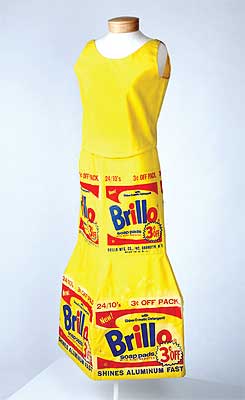 Andy Warhol,
Andy Warhol,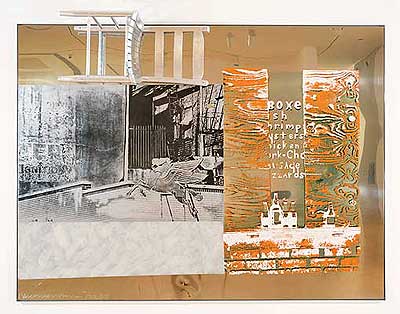 Robert Rauschenberg,
Robert Rauschenberg,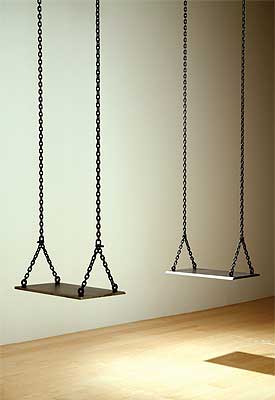 Mona Hatoum,
Mona Hatoum, Pae White,
Pae White,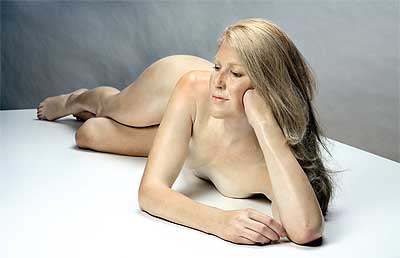 John De Andrea,
John De Andrea,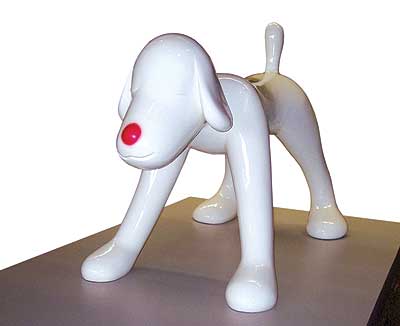 Yoshitomo Nara,
Yoshitomo Nara, Jim Dine,
Jim Dine,